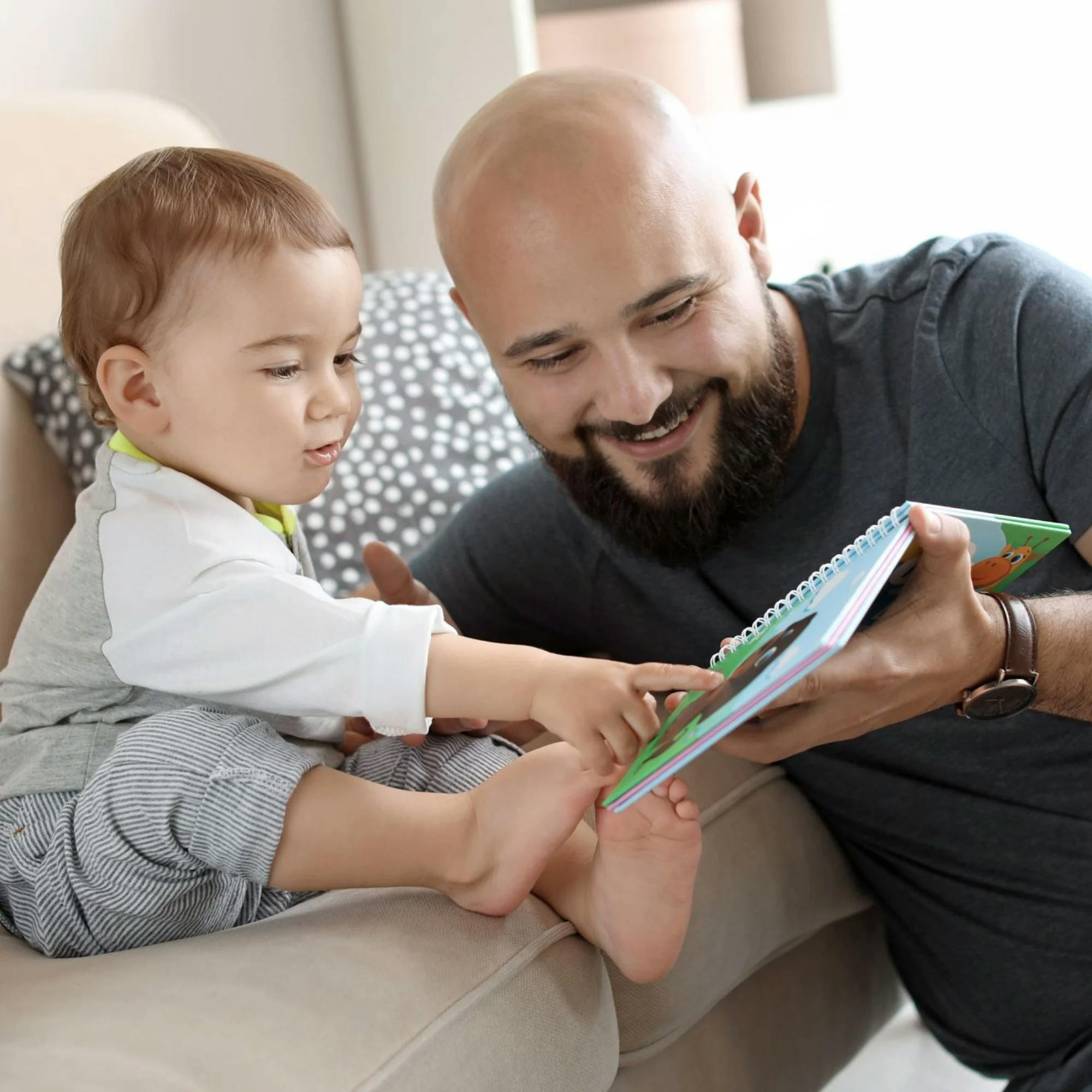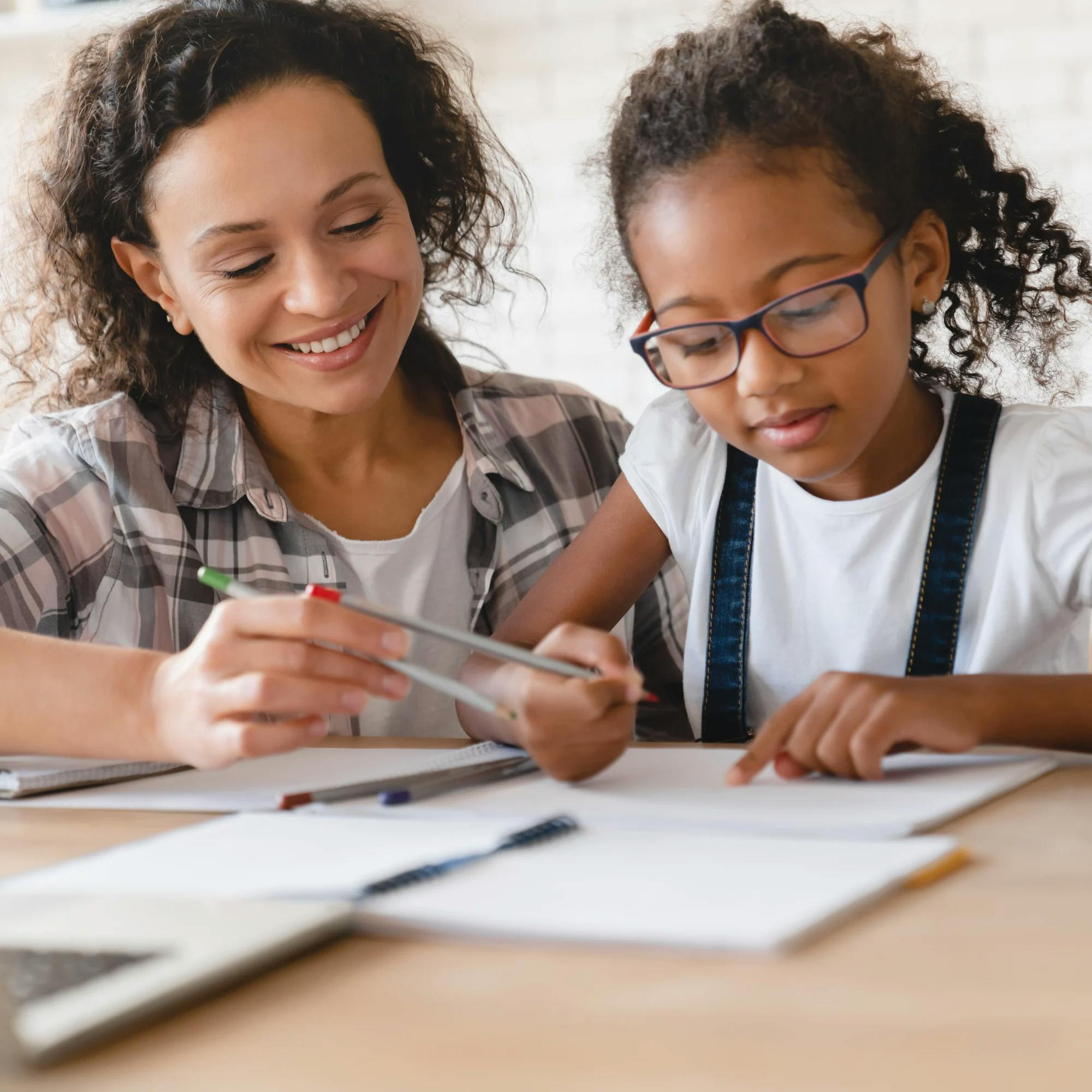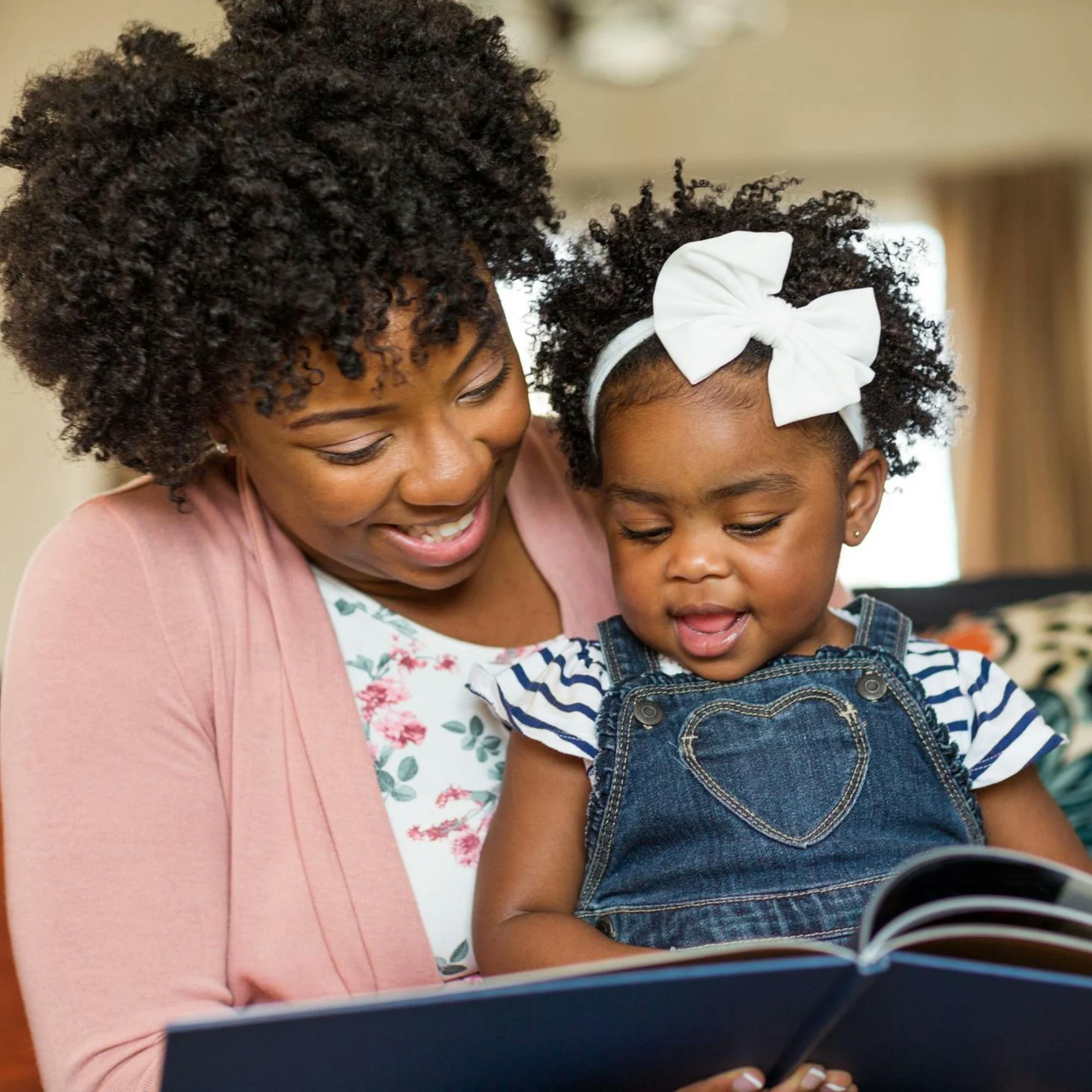
How to Read with Your Child to Grow Their Language and Literacy Skills
 Alexis Irazoque, M.S., CCC-SLP
Alexis Irazoque, M.S., CCC-SLP
Storytime is a common way to bond and spend quality time with your child. But it can be even more than that. Certain styles of reading aloud can promote early language skills and prepare your child to start reading themselves.
In this article, we discuss some easy strategies you can use to boost your child’s speech and language development while you’re snuggled up with a book.
How to make the most of reading aloud to your child
The benefits of reading aloud to your child are endless! Consider this mind-blowing stat: One study revealed that when parents read just one book a day to their child, by the time that child enters kindergarten, they’ve heard a total of 1.4 million more words than children who aren’t read to.
Research has shown that children learn the most from books when they are actively involved.
In a typical scenario, the adult reads, and the child listens–a truly wonderful bonding experience. But you can take this to a whole new level by engaging your child in conversation about the book, which supports their speech and language development.
Research has shown that children learn the most from books when they are actively involved. Here’s how you can make it happen.


How do I get my child actively involved in reading?
Let’s get technical for a minute–stay with us! Here are two techniques you can use to support your child’s language and literacy skills:
Interactive shared book reading: A set of techniques usedto engage children before, during, and after reading the story.
Dialogic reading: A set of prompts used to involve children in these discussions by allowing them to become the storyteller. This is when we as caregivers become the “audience,” as opposed to the traditional storytime scenario (adult reads, child listens). This creates a unique opportunity to engage with your child on their level.
Whether your child takes the lead by pointing, naming pictures, or telling the story through their own eyes, one of the most important things you can do is show interest in what they’re doing or saying. Ask them questions and respond in an encouraging way.


What are the benefits of using these reading techniques?
Research has shown that using shared and dialogic reading techniques is linked to:
Better language comprehension (how much your child understands)
Growth in vocabulary (how many words your child knows and uses)
Better reading skills as your child gets older
There are a few reasons these reading techniques work so well:
The child is actively engaged in the story, rather than passively listening.
You’re introducing your child to new words and more complex sentences that they might not hear every day.
Your child is taking in new information and connecting it to things they already know.
Your child is exposed to the building blocks of literacy–things like story structure, new words, and even the ability to understand what the writer means when they don’t directly say it (called inferencing)
At what age can I use shared and dialogic reading techniques?
These techniques can be used with children, toddlers, and babies as young as 6 months old! However, it’s important to be aware of your child’s language level in order to understand which prompts will work best.
For example, you might engage your baby by asking a “where” question, such as, “Where is the dog?,” and giving them a chance to respond by pointing. As they get older and gain more language abilities, you can ask questions about the story or how the characters feel. For example, “What did the dog do next?” and “How do you think the dog feels?”
This resource gives examples of different prompts you can use for children from age 6 months to 5 years old. (Take a look at Table 1.) Tip: Check out this Instagram post from one of our speech therapists to learn how to adapt children’s books to any age! This can be helpful for reading the same book to siblings of different ages, or continuing to read a favorite book with your child as they get older. You can even adapt a book for older kiddos to enjoy it with your toddler!


What kind of books should I read with my child?
These techniques can be used with virtually all children’s books, but books that are interesting to your child are a great place to start! We want the books to be age-appropriate, have appealing pictures, and have limited but predictable and repetitive text. Examples of books highly recommended for dialogic reading include Good Night, Gorilla and Brown Bear, Brown Bear–What Do You See? You’ll find lots more recommendations here and here. But again, any children’s book will do.
Try this: Think about a book your child likes, and keep it in the back of your mind as we go through the techniques and prompts below. That way, you can start thinking about how to use this specific story with your child!


So, how do I do interactive shared book reading?
First, let’s discuss how to make book reading interactive. The Hanen Centre has developed an easy acronym, OWL, to help parents and caregivers remember 3 things to do:
Observe: What is your child interested in? Spend time on that page!
Wait: Don’t say anything right away, but look at your child expectantly.
Listen: Listen to your child and respond with enthusiasm. When responding, you can simply repeat their words, then add more information, such as new words or ideas. For example, if you ask your child, “What do you see on this page?,” and they say “dog,” you could respond, “Yes, it’s a big, brown dog! He looks like he wants to play.” This is a powerful technique used by speech therapists to encourage language development.
You can use the OWL steps at these times:
Before or after you turn the page
After making a comment about something in the book
After pointing to and commenting on a picture
When something exciting happens in the story
After asking your child a question


Here are some more ways to prompt your child to talk about a story and further their understanding of it. (Hint: These can be easily recalled using the acronym CROWD.) Let’s use The Very Hungry Caterpillar by Eric Carle as an example.
Completion: While reading repetitive text, pause before completing a sentence and let your child fill it in! For example, “And he was still _____ [hungry].” This helps them learn about sentence structure.
Recall: For children who are at least 4 or 5 years old, ask questions about the story. For example, “What was the first food the caterpillar ate?” This helps your child learn about the plot and sequence of events.
Open-ended: Ask open-ended questions that require more than a one-word response. For example, “Tell me about what you see in this picture.” This helps children improve their expressive language skills.
Wh- questions: Ask your child questions that start with “wh.” For example, “Why do you think the caterpillar felt better after eating a green leaf?” These questions expand children’s vocabulary. Other “wh-” questions include:
Tell me prompts (e.g., “Tell me about this picture…”)
What questions (e.g., “What do you think…”)
How questions (e.g., “How do you know…”)
I wonder prompts (e.g., “I wonder what's happening in this picture…”)
Distancing: For children who are at least 4 or 5 years old, help them make connections between the story and their own life. For example, “Have you ever had a stomach ache like the caterpillar?” This helps children build their narrative skills.
Talk with your child before, during, and after reading
Interactive shared book reading focuses on three different times of the reading experience: before, during, and after.
Before you read a story with your child, you can point to the title or ask your child to predict what will happen in the story.
Then, you can make comments and ask questions during the story. Encourage your child to share their ideas, and follow their lead!
After the story, you can talk about it and make meaningful connections by asking your child to reflect on how the story relates to their own experiences. For example, while looking at a picture of animals, you could say, “Remember when we went to the zoo last week? Which of these animals did we see?”


More tips to use when reading with your child
One important thing to keep in mind is that while these prompts and questions are powerful tools to use, we want this to be an enjoyable activity for your child. They shouldn’t feel like they’re being quizzed.
Reading together should be enjoyable for your child. They shouldn’t feel like they’re being quizzed.
Let’s discuss a few more easy strategies to use:
Make reading part of your daily routine! Find a time of day that works best for you and your child–maybe it’s during bath time, after getting dressed in the morning, or when winding down before bed.
Read and re-read the same book. Children really do benefit from reading the same story again and again. You can always build and expand on ideas you’ve talked about in the past.
Be expressive when reading aloud. Try using different voices for the characters to gain your child’s attention.
Consider your child’s developmental level and keep their interests in mind. Choose books that can hold their attention for an age-expected amount of time.


Key takeaways
To sum up, the goal of these shared reading techniques is to get your child actively involved in storytime. The techniques include:
Making comments and asking questions about the story
Waiting before turning the page to give your child time to respond
Talking about ideas outside of the pictures and text
Using expanded vocabulary so your child hears new words
Following your child’s lead and going at their pace
Interactive shared book reading has so many benefits. It supports early language development, conversation skills, and other literacy skills. When you regularly read to your child, they learn language faster. They’re more likely to start school with a larger vocabulary and be successful readers themselves.
At its heart, this shared reading style is meant to be a conversation between you and your child about the story. Have fun!
For further reading:
If you’re interested in a more technical “how to” version of these practices, check out the American Speech-Language-Hearing Association’s article here. (This article is a more caregiver-friendly version!)
Here are more ways to make reading enjoyable for your child.
This resource from the Department of Health and Human Services provides great ideas for prompting your child to participate.
Finally, here are more helpful tips from the University of Nevada.
How Expressable Can Help
Concerned your child isn't reaching age-expected milestones? Looking for communication support from a professional? Expressable is a national online speech therapy practice serving children and adults. We treat all major areas of communication and feeding, offer flexible hours including evenings and weekends, and accept most major health insurance plans. We’re proud to have earned more than 3,000 5-star reviews from our clients (4.9/5 average).
Our therapy model is centered on parent and caregiver involvement. Research proves that empowering caregivers to participate in their loved one’s therapy leads to better outcomes. That’s why we combine live, 1-on-1 speech therapy with personalized education and home practice activities for faster progress.
Communication is more than words. It’s how we share how we feel and show who we are. We’re here to help you or your child do just that.






